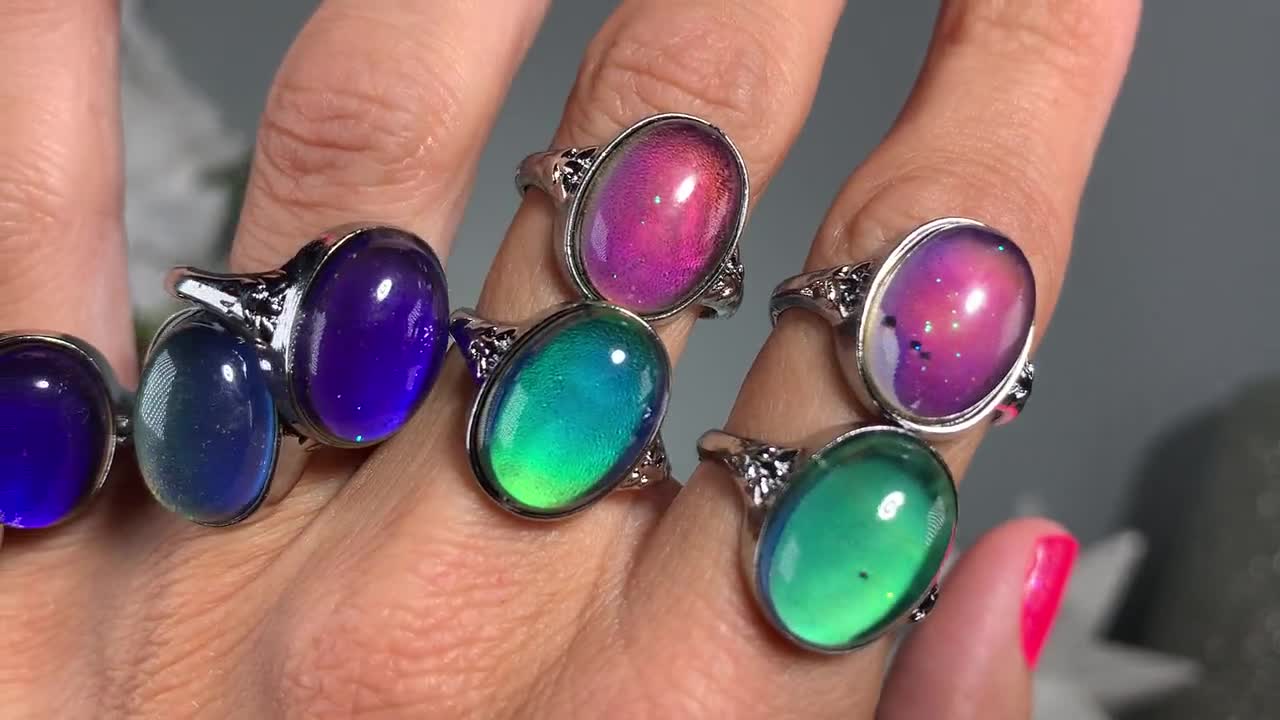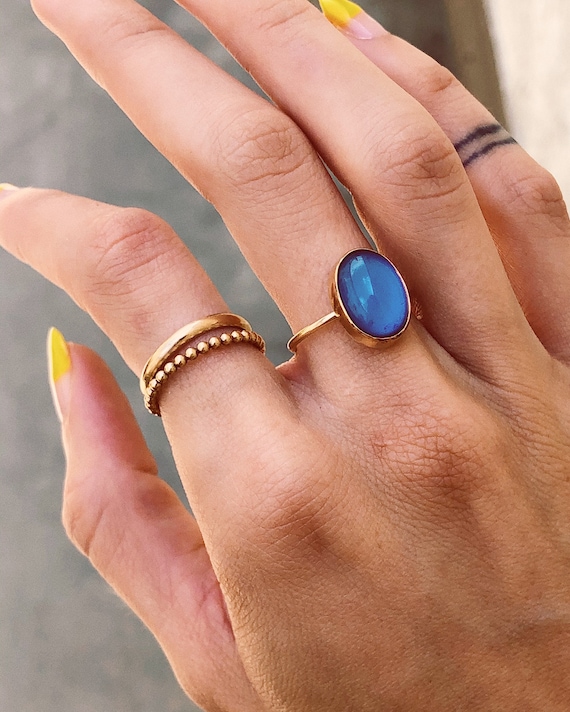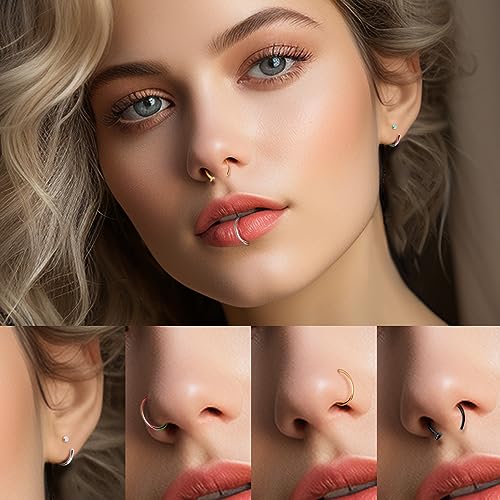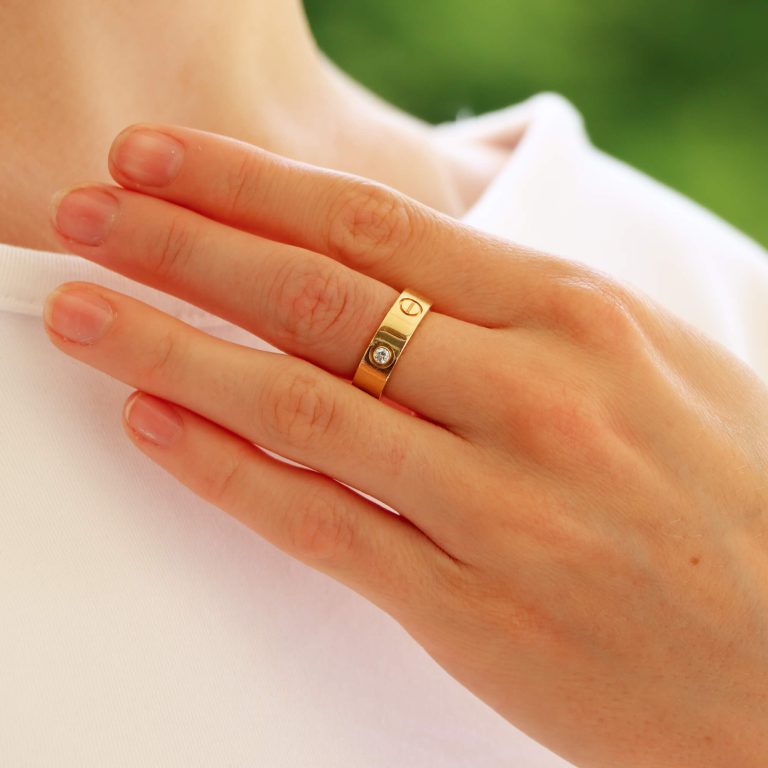
Mood Ring Color Meanings
Mood Ring Color Meanings: Decode Your Emotions
Mood rings have fascinated people since their invention in the 1970s. The quirky rings change colors in response to body temperature to supposedly reveal emotions. While mood ring colors aren’t an exact science, they provide insight into our shifting human moods and feelings. Mood ring color meanings:Explore the meanings behind the rainbow of mood ring hues.

A Brief History of Mood Rings
The mood ring craze sparked in 1975 when jewelry designer Marvin Wernick introduced his “Emotions Ring” at a trade show. It featured a large oval stone that shifted colors based on temperature changes detected from the finger.
The stone was actually a heat-sensitive liquid crystal encased in quartz. As the body’s temperature fluctuated, the crystal would change color to purportedly visualize moods ranging from anxious (black) to passionate (ruby red).
Wernick’s design was based on the concept of biofeedback – using external cues like color to reflect internal biological processes. Mood ring color meanings:Though mood ring color changes reflect body temperature, not emotions, the rings remain popular as a novelty. Let’s explore the meanings behind the colors.
Cool Emotions (Black – Blue – Purple)
Black
This inky shade represents a low body temperature around 82°F or lower. It’s often the initial color when first putting on a mood ring until it warms to your body heat. Black suggests feeling tense, stressed, or apprehensive.
Blue
The many shades of blue generally signify cooling, calming emotions. Dark blue around 83°F could mean feeling introspective, thoughtful, or soothed from meditation. Light blue around 85°F reflects feeling peaceful, tranquil, and content.
Purple
At the high end of the cool color spectrum, purple represents emerging creativity, intuition, and openness to new ideas around 86°F. Purple indicates a balance between logical and creative thinking.
Neutral Zone (Green)
Green
Green is the midpoint color on most mood ring scales occurring around 87°F. This hue represents a neutral, balanced emotional state – not strongly positive or negative. The color green suggests feeling relaxed yet mentally alert and engaged. It’s an ideal balanced mood.
Warm Emotions (Yellow – Orange – Red)
Yellow
Cheery, sunny yellow reflects warm emotions around 88°F. This mood color connotes feelings like optimism, hopefulness, clarity and enthusiasm. Yellow puts us in an uplifted, inspired frame of mind.
Orange
At around 89°F, vibrant orange corresponds to active, social emotions. Orange moods include feeling outgoing, chatty, mentally stimulated and engaged with life. It represents enthusiasm and high energy.
Red
The hottest color on the mood ring spectrum is red, indicating strong emotions around 90°F or above. This passionate hue reflects feelings of excitement, attraction, intimacy, anger or frustration depending on the context. Red conveys intense emotion.

Why Mood Ring Colors Shift
Mood rings respond to shifts in skin temperature, which is controlled by blood circulation. Changes happen for reasons like:
- Emotions – Intense feelings like stress and excitement increase blood flow, triggering hotter colors.
- Activity level – Exercise and movement raise body heat, reddening the mood stone. Relaxation drops temperature reflected in cooler hues.
- Environment – Warm rooms or weather shift the colors towards red tones. Cooler conditions prompt blue and black stones.
- Health – Fevers spike skin temperature into the red zone. Poor circulation may keep fingers consistently “blue.”
While blood flow changes with emotions, many other factors impact skin temperature. So mood ring colors give very generalized insight into feelings. Wearers must interpret results through the lens of their own physical state and experiences.
Modern High-Tech Mood Rings
Today’s mood rings use more advanced technology than the 1970s originals:
- Thermotropic liquid crystals – React precisely to subtle skin temperature fluctuations vs. older rings with wide color variance zones.
- Digital LED – Some rings have a computer chip that displays shifting LED light colors representing emotions rather than a heat-reactive stone.
- Heart rate tracking – New high-tech rings have embedded sensors reading heart rate and subtle blood flow changes that relate to moods. AI interprets the biometrics.
While still not scientifically validated, modern mood tech offers more than just the novelty of rings past. The digitized data provides tangible insight into our physical states that we can learn from.
How to Get Accurate “Mood” Readings
For the most accurate color results:
- Size it snugly – Loose rings don’t maintain flush finger contact to monitor temperature. Opt for a tight fit.
- Give it time to adjust – When first putting on a mood ring, allow 10-15 minutes for the stone temperature to stabilize before assessing color changes.
- Remove temporarily – Take the ring off hourly to allow finger circulation to reset for fresh readings when re-worn.
- Wear consistently – Seeing color patterns over weeks and months provides more insights than sporadic wear.
- Consider contexts – Factor in activity levels, environments, health status and other temperature influences when interpreting your color results.
While mood rings have limits, they do encourage wearers to reflect on shifts in emotions and states of mind throughout the day. Noticing fluctuations invites opportunities for self-awareness and reflection.
Your Mood Ring Mindfulness Tool
Despite some pseudoscience surrounding mood rings, they can serve as a mindful gauge of our physical and mental state. Tuning into your fluctuating mood ring colors over time provides a chance to check in with your emotions. The visual nudge can inspire self-reflection about how you feel and why.
So don’t reject your mood ring as a silly 70s fad. Let it serve as a springboard to better know yourself. Use the colors as an entry point to label emotions, understand triggers, reduce stress, and enhance your self-awareness. With some personal interpretation, your ever-changing mood ring can help cultivate emotional intelligence.
Conclusion
understanding the meanings behind mood ring colors can offer valuable insight into our emotions and provide an opportunity for self-reflection. By recognizing the shifts in color and correlating them with our feelings, we can become more in tune with our emotional state. This awareness can lead to healthier emotional regulation and a better understanding of how our feelings influence our behavior. Whether it’s the calming blue of relaxation or the passionate red of excitement, each color serves as a reminder to acknowledge and address our emotions. Embracing the unique language of our mood rings can empower us to navigate our emotional landscapes with greater mindfulness and understanding.



